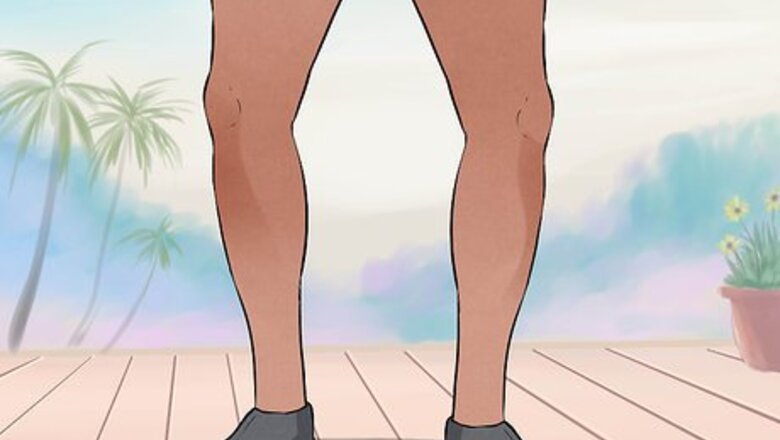
views
Doing a Basic Underhand Serve
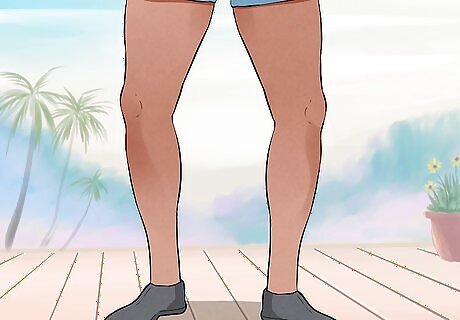
Ready your stance. Place your feet about shoulder width apart, but staggered in an up-and-back position. You should be able to rock back and forth in this position without fear of falling over, as it is the most stable. Make sure your feet are planted on the ground and you are not standing on your toes. You will begin with your weight shifted to your back foot, while maintaining your stance with your front foot fully on the ground as well.
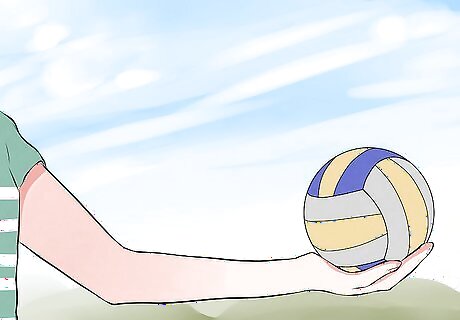
Pick up the ball. You should hold the ball in your nondominant hand (the one you don’t write with), with your other hand laying at your side. Hold the ball in front of your body, above your hips and just below your waist. Don’t hold the ball too far out from your torso, otherwise you won’t be able to hit it with your opposite hand. Don’t grip the ball too firmly, but rather let it rest on your palm using a gentle grip with your fingers to keep it from falling.
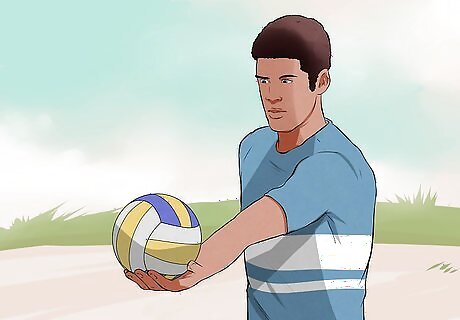
Check your posture. Your upper body and shoulders should be leaning forward slightly, and you should keep your eyes on the ball at all times.
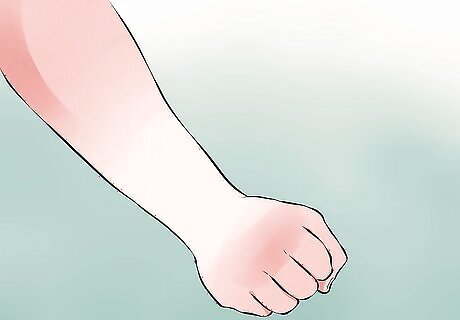
Make a fist with your other hand. Close your hand, with your fingers tucked in and your thumb resting at the side.
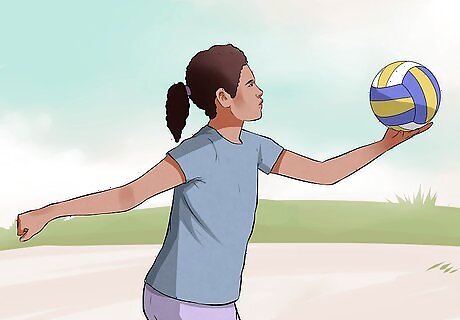
Swing your arm. Using your hand with a closed fist, swing your arm in a pendulum motion to hit the ball. Swing your arm with your palm facing up and your thumb facing out. Don’t wind your arm up very far prior to the swing; bring it back the same distance as you have to swing forward. For example, if you have to swing your arm forward half a foot, then swing with your arm only half a foot behind your starting position. Shift your weight forward slightly from your rear foot to your front, in time with your swing.
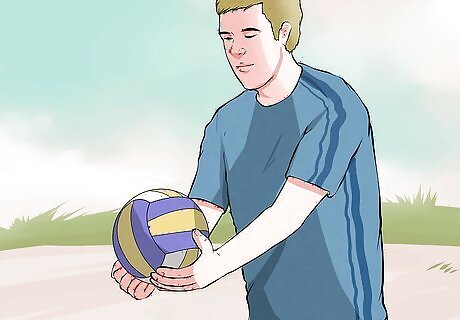
Hit the volleyball. Aim to hit the ball just below the center, so as to propel it slightly upwards and over the net. Drop the hand holding the ball just before making contact with your swing. Follow through with your swing. Don’t stop your arm from moving immediately upon hitting the ball, but allow it to propel forward to give your hit more power. Keep your eye on the volleyball the whole time to aid in making contact.
Making an Overhand Float Serve
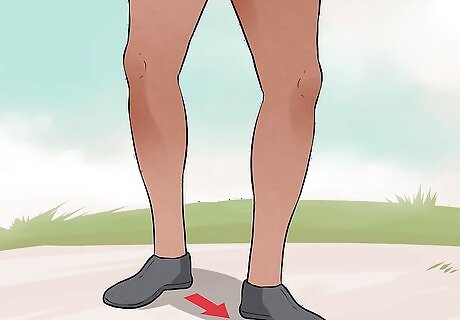
Place your feet in the proper position. They should be shoulder width apart, with your non dominant foot leading. Have your feet and body facing directly where you plan on serving the ball. This will line up your body, giving you the most power in your serve. Your weight should be resting on your back foot.
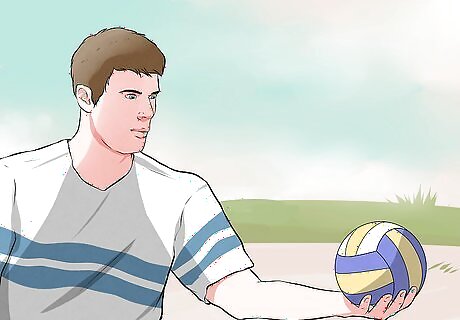
Hold your arm out perpendicular from your body. You will hold the ball up with your secondary hand - the one you don’t write with. This is also called your shelf hand.
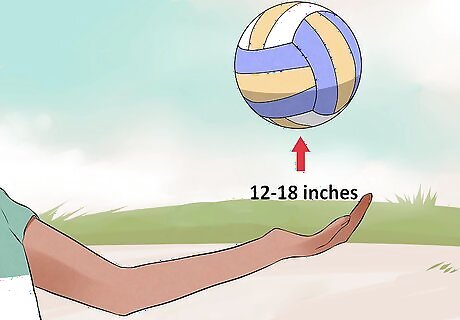
Prepare to toss the ball. You will use your shelf hand to lift the ball above your head, tossing it 12–18 inches (30.5–45.7 cm) up. Release the ball near eye-level or when your arm is fully extended. Be sure to throw the ball straight up, as throwing to the side will force you to have to reach and make your hit out of balance. Don’t try to throw the ball per se, but rather lift it into the air in a pushing motion. This will help to prevent a throw that is too high. Prepare to hit the ball. Bring your hitting elbow back so that it is held in the air just above your ear. Imagine pulling a bow-and-arrow string as you reach back to hit the ball. This is about how your elbow should be bent before the hit. When the ball hits its highest point, swing forward to hit it. Use the torque from your arm and torso to add strength to your hit.
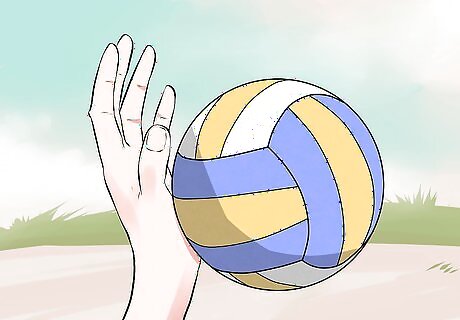
Hit the ball. Keep your hand open and hit with the heel of your palm, or close it in a half-fist. Use a punching action to hit it, stopping your swing just after you make contact with the ball. Unlike an underhand serve, you will have little to no follow through after you hit the ball. Push forward with your hand to hit the ball with little to no spin, as is desired for a floating serve.
Doing an Overhand Topspin Serve
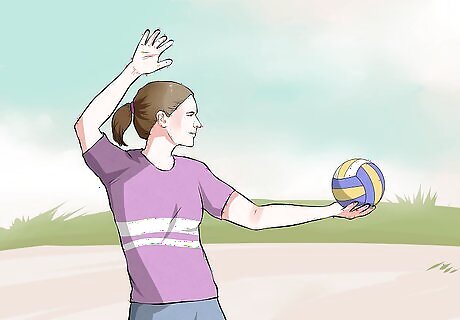
Get in the proper position. Use the same ready-position as you would with an overhand float serve, with your feet shoulder width apart and slightly staggered. Your weight should be resting on your back foot and your body leaning slightly forward. You will hold your shelf arm out perpendicular to your body to throw the ball. Bring your hitting arm back with your elbow pointing behind you, at about eye level.
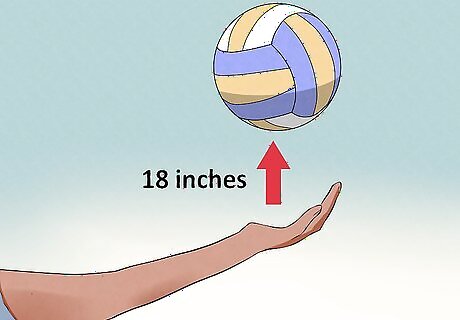
Toss the ball. Throw the ball up into the air like you would for a float serve, but throw it at least 18 inches (45.7 cm) above the starting point. Be sure to throw it straight up, not to the side, to allow for a balanced hit. Although you are throwing it a bit higher for the topspin serve than for the float serve, do not throw it too high. You will likely under/overestimate the timing to hit it, leading to an unbalanced hit.
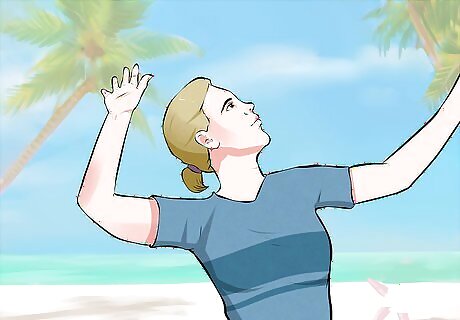
Bring your arm back to hit. Use the same pose as you would for a float hit, with your elbow above your ear and behind your head.
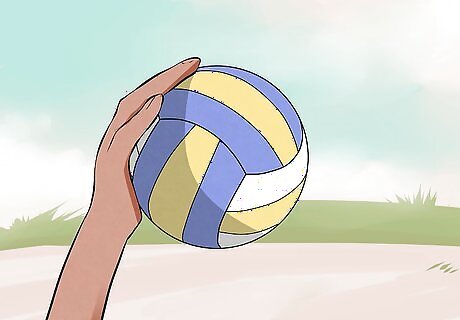
Swing forward with your arm to hit the ball. Instead of punching at the ball like a float serve, you will instead hit downwards with an open hand. As you swing, you will turn so your throwing shoulder is facing away from the ball. Snap your wrist downwards so that your fingers are angled towards the floor. Do this as you make contact with the ball to push it forward. Follow through all the way with you arm on this serve, so that your hand will come to a stop much lower than where the ball originally was. You will end the hit with your weight shifted to your front foot.
Performing a Jump Serve
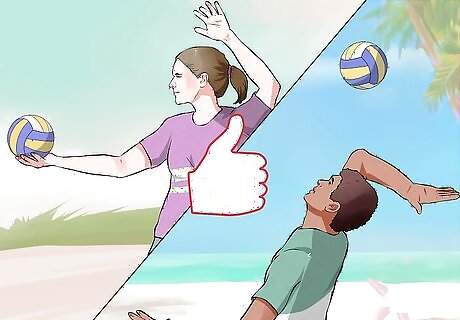
Make sure you are prepared. A jump serve is the most advanced of all the serves, and should only be done when you are sure of your ability to successfully perform the other three.
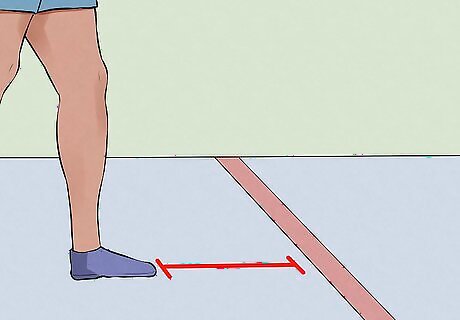
Position yourself a good distance from the line. If you are playing on a court, a jump serve must be performed from outside the line, although you can land inside after having jumped.
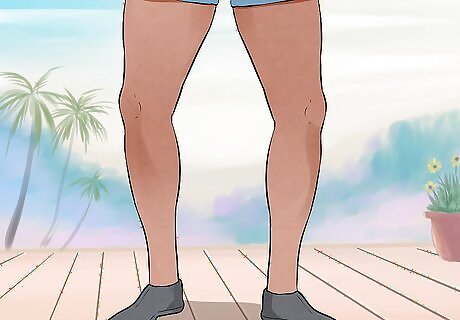
Get in the ready position. Place your feet shoulder width apart with the leg on your non-hitting side placed forward slightly. You will be taking a few steps forward, so be sure that your stance is comfortable for doing so. Hold the ball in your shelf hand, and prepare to draw your hitting arm back for the swing.
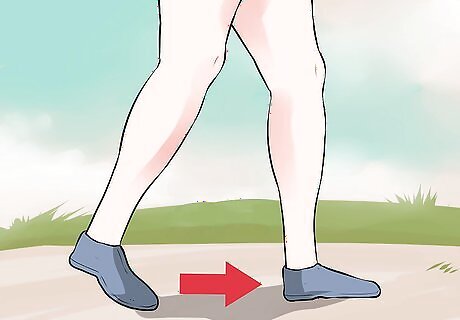
Take your steps forward. Take two steps forward, beginning with your left foot. Don’t take steps that are too wide, as they will throw you off balance when you go to hit. To practice you can take these steps slowly, but in a game you will want to take these steps in quick succession.
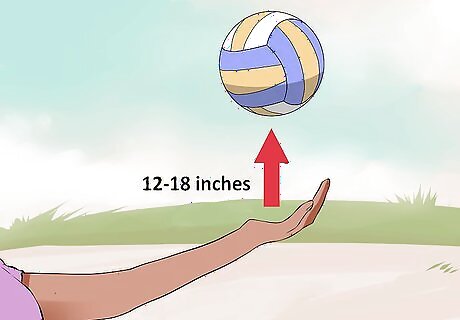
Toss the ball. At the beginning of your third step forward, throw the ball into the air 12–18 inches (30.5–45.7 cm) high with your shelf hand. Throw the ball straight in front of you, not off to the side, to improve your chances of hitting the center and getting a better serve. Be sure to toss the ball slightly forward, not directly above you. This is because you will be moving forward with your jump, and don’t want to have to reach back to make the hit.
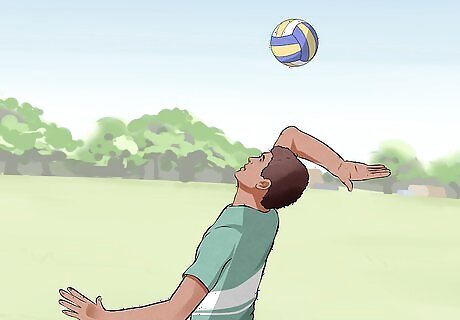
Jump up and forwards, bringing your arm back at the same time. You want the jump to be as powerful as possible, to add momentum to your hit. Bring your arm up and back, with your elbow just above your ear. Use your momentum to push your body forward in time with your hit; you want the ball to be around eye-level before you make your swing.
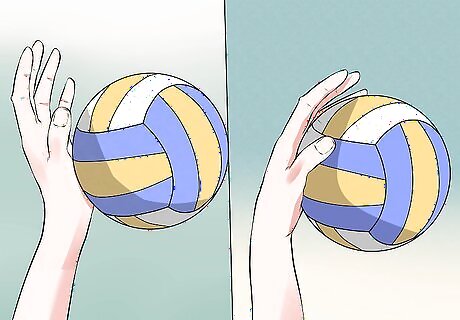
Hit the ball. You can choose either a float serve or a topspin serve to hit, using the same techniques for both except for in the air. For the floating serve, bring your arm back and push forward with an open palm, like a punch. You may have a little follow-through with this because of your jump. To do a jumping topspin serve, hit the ball downwards flicking your wrist in the process. You will have a lot of follow-through with this because of the jump.




















Comments
0 comment